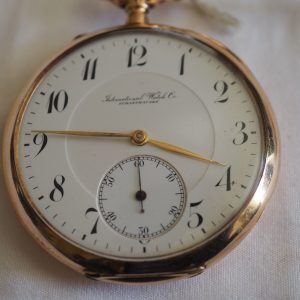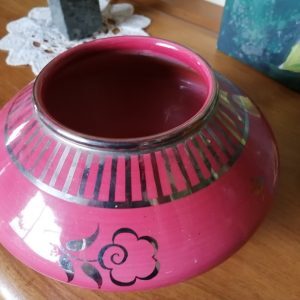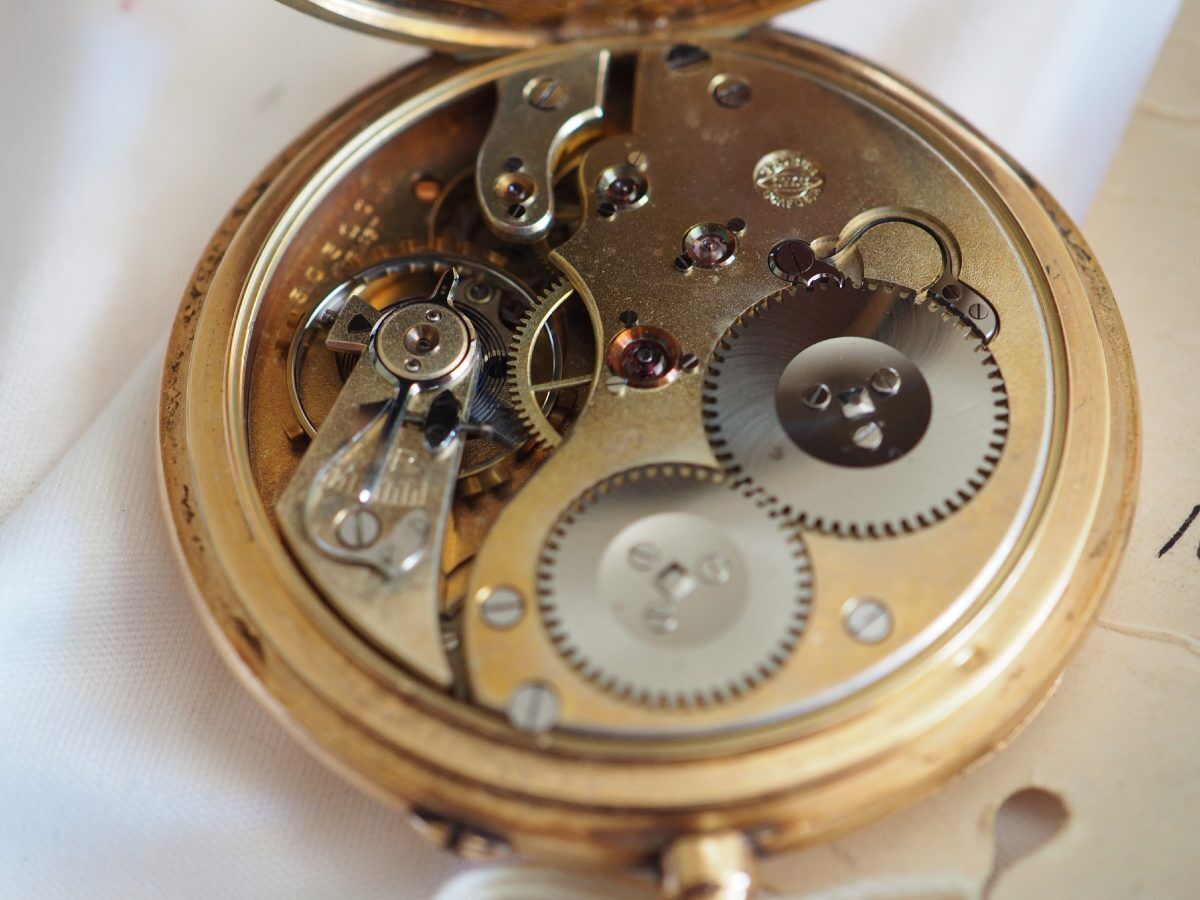For what it’s Worth : Time Pieces – Pocket Watches
In the last issue, I started a series of articles on timepieces; watches, pocket watches and clocks. This month will focus on pocket watches.
The first pocket watch was made by a German watchmaker, Peter Henlein in 1510. Europe had skilled watchmaker craftsmen, who learned thru mentorship programs with experienced expert watchmakers. The majority of pocket watches up until the early 1800’s were English or Swiss made, and imported to America. The first American watchmaker, Luther Goddard of Massachusetts, is reported to have produced the first made in America Pocket watch movement in 1812, which is on display at the National Association of Watch & Clock Collectors Museum in Columbia, Pennsylvania and for which I did an appraisal report on in 2016. If you have any interest in timepieces, the museum is worth the visit. https://www.nawcc.org

Vintage American Pocket Watches,The company of H. & J. Pitkinin Hartford Connecticut started making movements and cases using machines. In 1859, the American Watch Company was started by Aaron Dennison to produce American watches using machine based metal working tools. The company was changed to the American Waltham Watch Company. Other manufacturers followed as Elgin, Adams & Perry (later Hamilton) E. Howard, Illinois were the most popular and well-known. Competition, increased, and some companies specialized in lower priced pocket watches. Companies in 1880, like the Waterbury Watch Company, and later Ingersoll Watch Company, were selling watches for a dollar. This was in 1892. Today, this watch would sell for ~ $ 225.00 US funds. Almost every family has a pocket watch that has been given or handed down thru the years. Many are still in a operating condition, needing nothing more than a cleaning and oiling by a qualified watchmaker. Many of these watches are sought by collectors. Please note, the demand for pocket watches vs wrist watches has dropped in value. The younger generations do not have a direct connection to the history of the pocket watch. The condition of the pocket watch is very important. Some of the companies produced 14K or 18K Gold cases & chains which has a greater value. If a vintage pocket watch is not working after years of not being used, the cost of repair might be greater than the pocket watch value. You also have to weight the sentimental value. Is this something that was handed down to you as a family keepsake? Or do you want to sell it for its market value.
Swiss Made Pocket Watches. Names like Patek Philippe, Rolex, Breguet, Junghans, Jaeger-LeCoultre, Longines, Zenith, Cyma, Tissot and Omega are the most common. The Swiss movement, the case, dial, hands and lenses are factors that determine the value. The most popular watch cases were silver due to its lower cost at the time. Next were gold rolled cases, where they took very thin plates of gold, and pressed them onto a copper / tin case. This was for the client who wanted the look of gold, but could not afford a 14K or 18K gold case. The 14K or 18K gold cases were for movements that had a greater value and were made by a dedicated watchmaker. There are many types of cases, and take care in opening the front back and curvette. Is it a hinged case, a screw back or snap back case? You can easily damage the watch case and movement. Take it to a qualified watchmaker and see what he says for the cleaning and repair. At the same time he will be able to show you how to open the case and operate the pocket watch.
Here are some of the steps to take to determine value. What to look for.
1. Take notes on what is written on the dial, front & back cases. Carefully open the back case, and take note of what is engraved on the movement. (Try not to move any parts or force the watch to work.)
2. Use the notes to do searches on Google. If you can do an image search, it might help to narrow down a comparable watch.
3. Note the condition, is the watch case beat up, scratched heavily, not working, what is broken, or visible missing parts?
4. Is the watch dial readable, hour, minute and seconds hands present. Is the lettering clear? Is the enameled dial cracked, or shows crackled lines? Is the crystal lens scratched, or chipped or missing.
5. Is the watch case, gold plated, gold rolled (thin gold plate pressed between a copper / steel / brass sheet) or is it marked, 14 K – 18K Gold. Or Silver, marked 925%, Sterling, or has verifiable hallmarks.
6. Do you have any history of the watch, its owner(s), repair history, paperwork associated with the watch. Is there a person who knows the watch or history of it. It might be worth your time to note all the details.
7. Record any markings, inscriptions, and other watch details, you can find on the casing.
8. Check Ebay or Etsy completed sales. These websites have some interesting pocket watches. https://www.antiquorum.swiss & https://www.antiques-atlas.com/antiques/ watches/pocket_watch&https://www.chrono 24.ca/watches/pocket-watch–44.htm#gref

Just looking at what others are asking is not realistic to determine value. Researching takes time, but you will find something comparable to what you have. If a watch is known as not working, or is missing pieces, it can be sold for its parts. Please note, the market for pocket watches has changed since the 1990’s. Many 14K or 18K are just purchased for the Gold Melt value, regardless of the watch. Many persons have sold very potentially valuable gold pocket watches, where in the right auction, would have given them a high financial result. Unfortunately, I hear stories like this all the time. Due diligence is required on the seller’s side. I have no financial relationship with any of the mentioned companies.
Appraisal Request that was sent to The Seeker
Mrs. Reiman located in the SDG counties, has a Wedgwood vase purchased in the UK about 75 years ago. (Picture above) Wedgwood is known for its ‘Wedgwood Blue’ porcelain pottery. Mrs. Reiman’s vase is an uncommon piece that was not mass-produced. The Geographic location is based on the Canadian market. The market value for this vase is C$ 225.00
Next Article: Clocks, Tall Case, Carriage, Novelty & Wall Clocks






